Tampa, FL Pollen and Allergy Report for Summer 2023
Pollen Allergy Trends in Tampa, FL
When is pollen lowest in Tampa, FL?

May
Lowest month total PPM
Avg. PPM
When is pollen highest in Tampa, FL?

April
Highest month total PPM
Avg. PPM
How does pollen in Tampa, FL compare to Florida?
Tampa has a higher average PPM than the state of Florida.
Tampa yearly avg PPM:
Florida yearly avg PPM:
How does pollen in Tampa, FL compare to the USA?
Tampa has a higher average PPM than the USA.
Tampa yearly avg PPM:
USA yearly avg PPM:
Is pollen worse this year in Tampa, FL?
Spring 2023 was better than spring 2022.
Spring 2023 PPM:
Spring 2022 PPM:
Average PPM in Tampa, FL
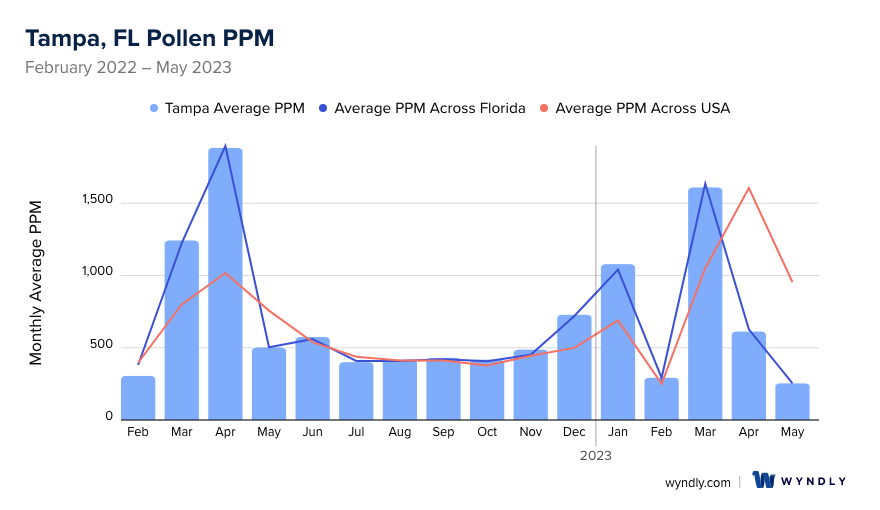
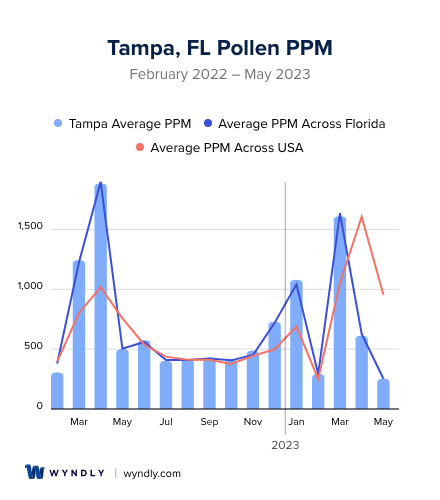
Tampa, FL Pollen and Allergy Breakdown by Month
Grass
When is grass pollen highest in Tampa, FL?
April has the highest grass pollen in Tampa, FL with an average PPM of
When is grass pollen lowest in Tampa, FL?
December has the lowest grass pollen in Tampa, FL with an average PPM of
Tree
When is tree pollen highest in Tampa, FL?
March has the highest tree pollen in Tampa, FL with an average PPM of
When is tree pollen lowest in Tampa, FL?
July has the lowest tree pollen in Tampa, FL with an average PPM of
Weed
When is weed pollen highest in Tampa, FL?
June has the highest weed pollen in Tampa, FL with an average PPM of
When is weed pollen lowest in Tampa, FL?
February has the lowest weed pollen in Tampa, FL with an average PPM of
Tampa, FL Pollen Monthly Breakdown by Pollen Type

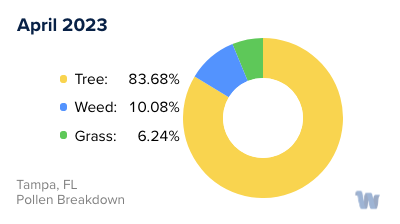
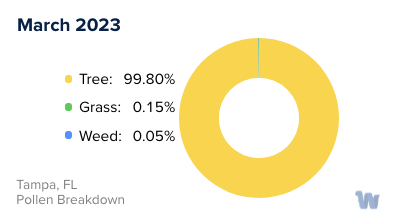
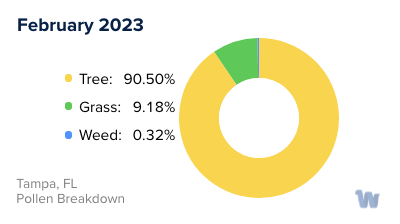
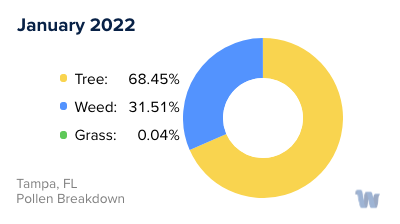
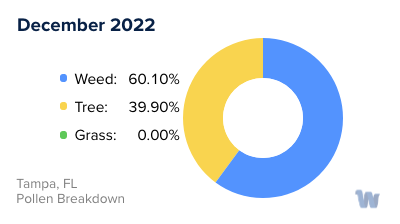
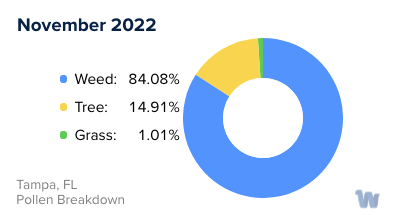
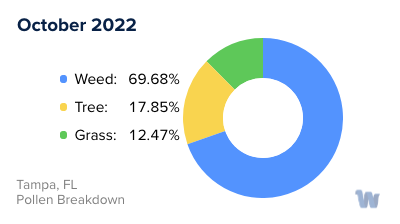
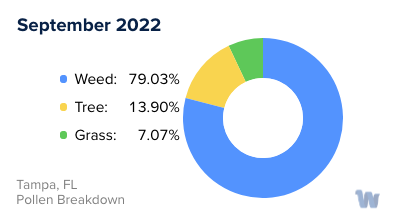
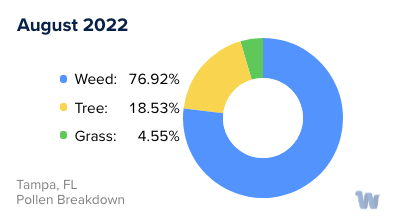
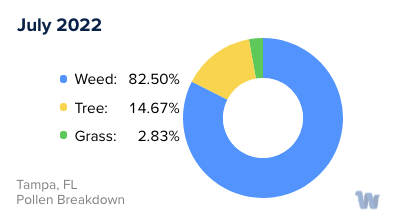
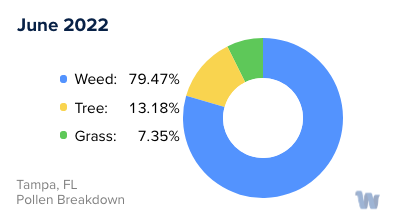
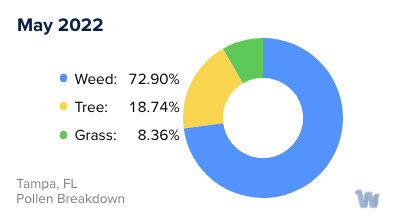
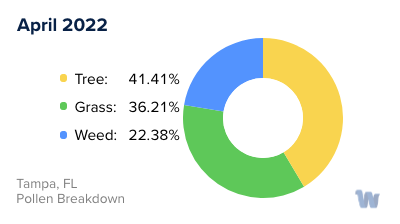
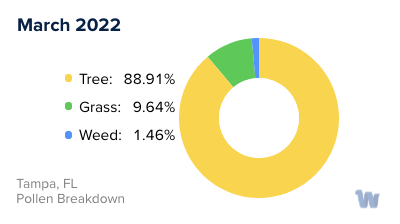
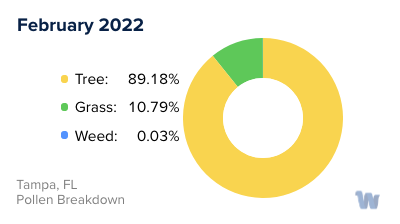
Pollen and Hay Fever in Tampa, FL
In the vibrant city of Tampa, Florida, where the sun often shines generously, many individuals find themselves navigating the challenges of pollen allergies and hay fever. As Tampa is blessed with a diverse array of vegetation, it is essential to understand the types of pollen and the seasons in which they are most prevalent.
Pollen allergies, commonly referred to as hay fever, occur when one's immune system reacts to pollen from trees, grasses, or weeds. In Tampa, tree pollen is particularly abundant during the spring months. Oak, pine, and cedar trees are the primary culprits, releasing vast amounts of pollen into the air.
As spring transitions into summer, grass pollen takes center stage. Bermuda, Bahia, and St. Augustine grasses, which are widespread in Tampa, are known for producing pollen that can trigger allergic reactions. During this season, it is not uncommon for residents to experience itchy eyes, sneezing, and nasal congestion.
Weed pollen, on the other hand, becomes prominent in the late summer and early fall. Ragweed is a significant offender in Tampa and is notorious for its ability to produce a large quantity of pollen. Additionally, other weeds such as sagebrush and pigweed contribute to the pollen count during this time.
While Tampa’s mild winters provide a respite from the high pollen counts, it is essential to recognize that the city’s lush vegetation can cause pollen to be present year-round to some extent. Understanding the types of pollen and the seasons in which they are most prevalent can help residents of Tampa be more prepared and make informed decisions to maintain their well-being during the pollen seasons.


